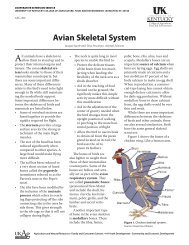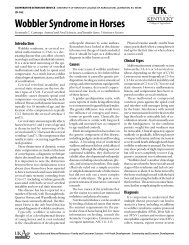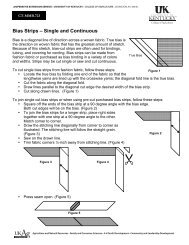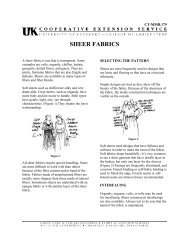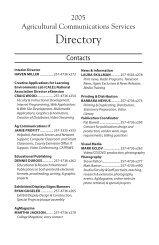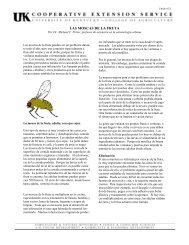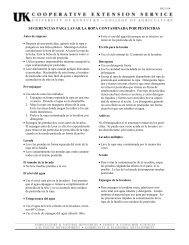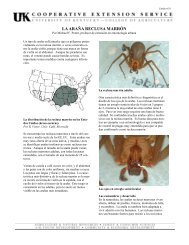Chapter 3 - CHICKEN ANATOMY AND PHYSIOLOGY
Chapter 3 - CHICKEN ANATOMY AND PHYSIOLOGY
Chapter 3 - CHICKEN ANATOMY AND PHYSIOLOGY
Create successful ePaper yourself
Turn your PDF publications into a flip-book with our unique Google optimized e-Paper software.
A. Digestive system<br />
The digestive system uses the nutrients in consumed feed for the maintenance of all the<br />
other systems of the chicken’s body. Ingested food is broken down to its basic<br />
components by mechanical and chemical means and these basic components are then<br />
absorbed and utilized throughout the body. A knowledge of the digestive process assists<br />
in understanding the nutritive requirements of chickens. In addition, knowing what’s<br />
‘normal’ can also help you recognize and take action when the digestive system goes<br />
awry. Frequent bouts with a particular digestive disorder, for example, may indicate a<br />
need for improved feeding or better sanitation.<br />
The avian digestive system begins at the mouth and ends at the cloaca and has several<br />
intervening organs in between (see Figure 3.2).<br />
3.2<br />
Figure 3.2 - The digestive tract of the chicken.<br />
• Beak / Mouth: Chicken’s obtain feed with the use of the beak. The feed then<br />
enters the digestive system via the mouth. The mouth contains glands that<br />
secrete saliva containing enzymes which begins the digestion of the feed<br />
consumed. The chicken does not have teeth to chew its feed. The tongue is used<br />
to push feed to the back of the mouth so that it can be swallowed. There are taste<br />
buds on the roof of the mouth and back of the tongue. The mouth is also very<br />
sensitive to temperature differences.



